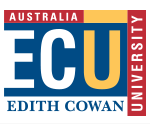Hamstring rate of torque development is more affected than maximal voluntary contraction after a professional soccer match
Document Type
Journal Article
Publication Title
European Journal of Sport Science
ISSN
1536-7290
Volume
19
Issue
10
First Page
1336
Last Page
1341
PubMed ID
31099729
Publisher
Taylor and Francis
School
School of Medical and Health Sciences
RAS ID
31146
Abstract
Match-induced fatigue of knee muscle strength and agonist-antagonist strength-ratios may affect both performance and risk of injury in soccer players. Once explosive tasks are imperative in soccer as well as hamstring strain injuries occur during high-velocity moments, rapid force capacity of this muscle group is especially important. This study evaluated the effect of match-induced fatigue on knee muscle strength and strength-ratio parameters after a single professional soccer match. Male professional soccer players (n = 16; 24.2 ± 3.9 years) were tested before and after a soccer match (56.2 ± 22.6 min of playing) for knee flexors (hamstring) and extensors (quadriceps) isometric peak torque (MVC) and rate of torque development (RTD) – as well as the hamstring-to-quadriceps ratio (H:Q) – at 30° of knee flexion. Knee injuries often occur at this joint angle, which is common in sprinting, pivoting, sidecutting, and jumping. Match-induced fatigue caused a left shift in the knee extensors torque-time curve with no significant change in both early (i.e. 0–50 ms) and late (i.e. 0–200 ms) RTD, and a right shift in the knee flexors torque-time curve with a decrease in early RTD (∼16%, p = .029) and late RTD (∼11%, p = .011). Knee extensors and knee flexors peak torque remained unchanged (p > .05). Early RTD H:Q decreased by∼24% (p = .027), while late RTD H:Q and MVC H:Q remained unchanged (p > .05). In conclusion, match-induced fatigue impaired the ability to rapidly produce force at an angle where injuries are most susceptible to occur. Important information is missed if only the traditional H:Q is considered.
DOI
10.1080/17461391.2019.1620863
Access Rights
subscription content


Comments
Grazioli, R., Lopez, P., Andersen, L. L., Machado, C. L. F., Pinto, M. D., Cadore, E. L., & Pinto, R. S. (2019). Hamstring rate of torque development is more affected than maximal voluntary contraction after a professional soccer match. European Journal of Sport Science, 19(10), 1336-1341.
Available here.